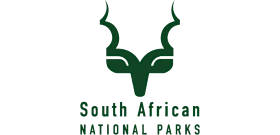 Kruger in August: Prime Wildlife Viewing & High Occupancy
Kruger in August: Prime Wildlife Viewing & High Occupancy
August shines as a prime month for wildlife viewing in Kruger National Park. The dry winter season offers exceptional game viewing opportunities, pleasant temperatures, and clear skies, making it ideal for both seasoned safari-goers and first-time visitors. Travel agents can capitalize on this peak season by highlighting Kruger's August advantages and providing clients with up-to-date information and booking strategies.
Weather-wise, August in Kruger is dry, sunny, and cool. Early mornings and evenings can be chilly, with temperatures dipping to 8-12°C, so advise clients to pack warm layers for sunrise game drives. Daytime temperatures reach a comfortable 24-28°C. The arid landscape, with low grasses and sparse vegetation, enhances visibility for wildlife spotting. Water sources like riverbeds and waterholes become vital for animals, concentrating wildlife and creating prime viewing opportunities, especially as the month progresses.
August is a peak time for observing diverse fauna. Elephants gather near water, buffalo herds roam the savannah, and predators like lions, leopards, and cheetahs are easier to spot due to the thinner vegetation. Rhinos and general game such as impala, kudu, giraffe, and zebra are also commonly sighted. While birdlife is less abundant than in summer, raptors and year-round residents offer unique birding experiences.
The dry conditions create ideal game viewing scenarios. Animals congregate at waterholes, increasing the chances of witnessing predator-prey interactions. Mating behaviors also become more apparent in some species, adding another dimension to wildlife sightings. The cooler temperatures extend the prime game viewing hours, with predators active longer into the morning and earlier in the afternoon.
Travel agents should emphasize that August is a popular time in Kruger, especially in the southern camps. Advance bookings for accommodations and activities are essential. Advise clients to pack for both cold mornings and warm afternoons, including essentials like beanies, gloves, and windbreakers for open-vehicle safaris. Binoculars are recommended for enhanced viewing, and spending time at hides near waterholes can be particularly rewarding. A practical tip: dust can be bothersome on dirt roads, so suggest keeping windows slightly closed or bringing a scarf or buff.
Recent infrastructure upgrades enhance the visitor experience. Refurbished facilities, upgraded roads, and new visitor centers improve accessibility and comfort. The ongoing development of the Shangoni Gate is set to further improve access to the northern part of the park. These improvements, combined with ongoing conservation efforts, contribute to a positive and sustainable tourism environment.
Wildlife populations are constantly monitored. While elephants, buffalo, and general game thrive, lions and rhinos face ongoing challenges. The Orpen-Satara-Nwanedzi region remains a hotspot for lion sightings. Travel agents can share these insights with clients, fostering awareness of conservation efforts and responsible tourism.
Booking trends for August 2025 indicate high demand and dynamic pricing. Occupancy rates are expected to be high, especially in popular camps and private lodges. Travel agents should advise clients to book well in advance to secure preferred accommodations. The increasing influence of tour operators, who often secure block bookings, further emphasizes the need for early reservations.
By combining knowledge of Kruger's August highlights with practical booking advice and insights into current trends, travel agents can create exceptional safari experiences for their clients. Emphasize the unique wildlife viewing opportunities, the improved infrastructure, and the importance of advance planning to ensure a memorable Kruger adventure.
